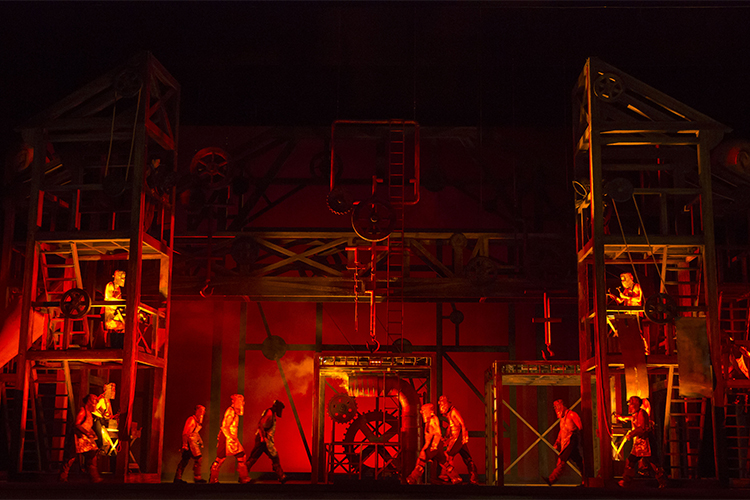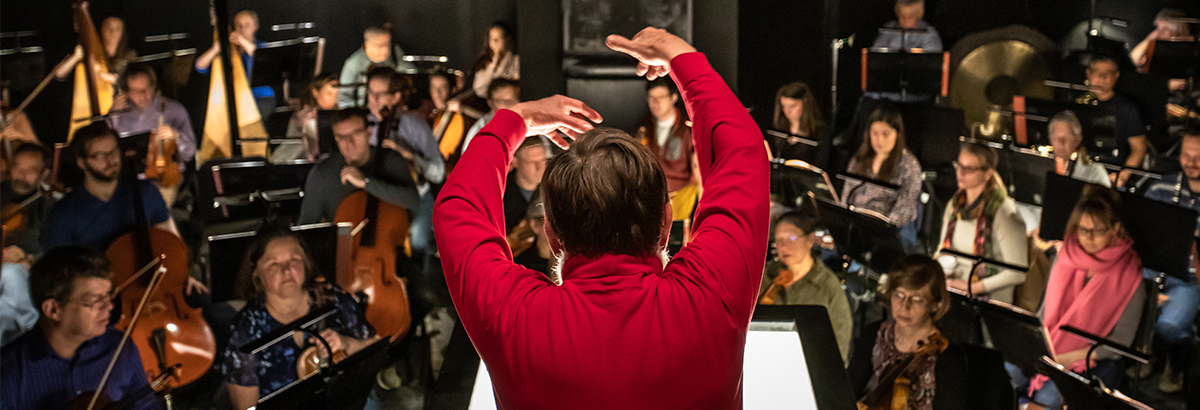April 22, 2020
The Instruments of the RING
Instrumentation in opera orchestras was never the same after the Ring cycle! The Ring orchestra numbers close to 90 players, and Wagner used every instrument to its absolute fullest capacity. There is glorious writing for the strings, but above all, Wagner took great steps forward with the brass.
The horn writing is truly virtuosic, and the massively scaled writing for trombones (such as in the "Ride of the Valkyries") makes for one of opera's most epic scores. From creating new instruments to modifying existing ones, Wagner was ahead of his time. Scroll down to hear some examples performed by the Lyric Opera Orchestra during our 2017 production of Die Walküre.
Wagner Tuba
Wagner created this infrequently heard instrument for his four-opera cycle Der Ring des Nibelungen. A kind of modified horn, it has a mellower and more eerie sound--falling somewhere between a French horn and a trombone. Here is a clip of the "Fate motif" from Die Walküre performed by Fritz Foss, Gabby Webster Mulcahy, Matthew Oliphant, and Stephanie Blaha.
"Wagner bell"
Wagner was always looking to push the boundaries of what was possible. In the 19th century, the lowest note a bassoon could play was B-flat. Unsatisfied, Wagner worked with Wilhelm Heckel (a manufacturer of woodwind instruments) to develop bassoons that could reach a low A-natural. These instruments are quite rare, so we make do by adding an extension, often called a "Wagner bell." Here, Hanna Sterba and Preman Tilson show us how it works.
Stierhorn
A stierhorn (literally a steer's horn) is an extremely long medieval bugle horn. Wagner calls for one in Die Walküre and four in Götterdämmerung. In Die Walküre, it is used to represent Hunding as he hunts Siegmund in the forest. How do we create that sound? Here Reed Capshaw, Adam Moen, and Josh Wirt demonstrate.
(Photo: Ain Anger as Hunding in Die Walküre / Cory Weaver 2017)
Harps
Fun fact: the ending of Das Rheingold calls for an astounding six harps! Here is a clip of speedy feet needed to play the "Magic Fire Music" at the end of Die Walküre, as Wotan surrounds his beloved daughter Brünnhilde with a ring of fire performed by Alison Attar, Lauren Hayes, Cheryl Losey-Feder, and Ellie Kirk.

Anvils
In Das Rheingold, as Wotan and Loge descend into Nibelheim, the score calls for 18 anvils—nine small, six medium, and three large—tuned to 3 octaves of F. In Siegfried, the title character taps out a rhythm on an onstage anvil while repairing his father's sword, Nothung, in the "forging song."
(Photo: The enslaved Nibelungs in Das Rheingold / Todd Rosenberg 2016)
Contrabass Trombone
Trombones (and the earlier sackbuts) have always come in a variety of sizes from small to very large. Richard Wagner used the contrabass trombone in the Ring cycle to dramatic effect. Here's David Becker playing Wotan's "Spear motif" from Die Walküre.
Bass Trumpet
The bass trumpet is exactly what it sounds like—an oversized trumpet. So big in fact that it is played by a trombone player. Here, Douglas Rosenthal—on loan during our 2017 production of Die Walküre from The Kennedy Center Opera House Orchestra—plays one of the many variations of the "Sword motif."
(Photo: Brandon Jovanovich as Siegmund wields Nothung in Die Walküre / Cory Weaver 2017)
Header Photo: Kyle Flubacker
Videos courtesy of the Lyric Opera of Chicago Orchestra. See more on Facebook.
